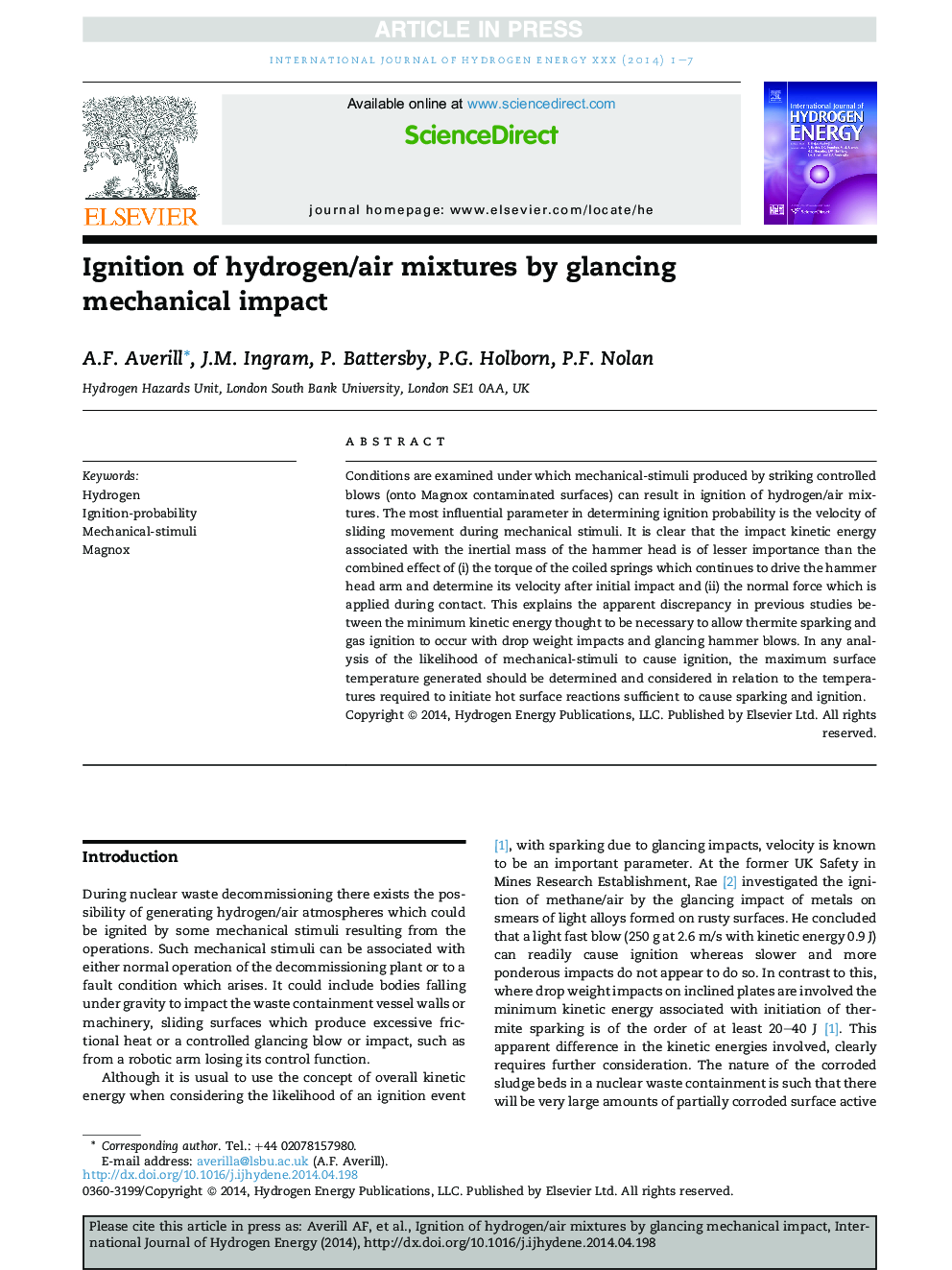| Article ID | Journal | Published Year | Pages | File Type |
|---|---|---|---|---|
| 7717933 | International Journal of Hydrogen Energy | 2014 | 7 Pages |
Abstract
Conditions are examined under which mechanical-stimuli produced by striking controlled blows (onto Magnox contaminated surfaces) can result in ignition of hydrogen/air mixtures. The most influential parameter in determining ignition probability is the velocity of sliding movement during mechanical stimuli. It is clear that the impact kinetic energy associated with the inertial mass of the hammer head is of lesser importance than the combined effect of (i) the torque of the coiled springs which continues to drive the hammer head arm and determine its velocity after initial impact and (ii) the normal force which is applied during contact. This explains the apparent discrepancy in previous studies between the minimum kinetic energy thought to be necessary to allow thermite sparking and gas ignition to occur with drop weight impacts and glancing hammer blows. In any analysis of the likelihood of mechanical-stimuli to cause ignition, the maximum surface temperature generated should be determined and considered in relation to the temperatures required to initiate hot surface reactions sufficient to cause sparking and ignition.
Keywords
Related Topics
Physical Sciences and Engineering
Chemistry
Electrochemistry
Authors
A.F. Averill, J.M. Ingram, P. Battersby, P.G. Holborn, P.F. Nolan,
